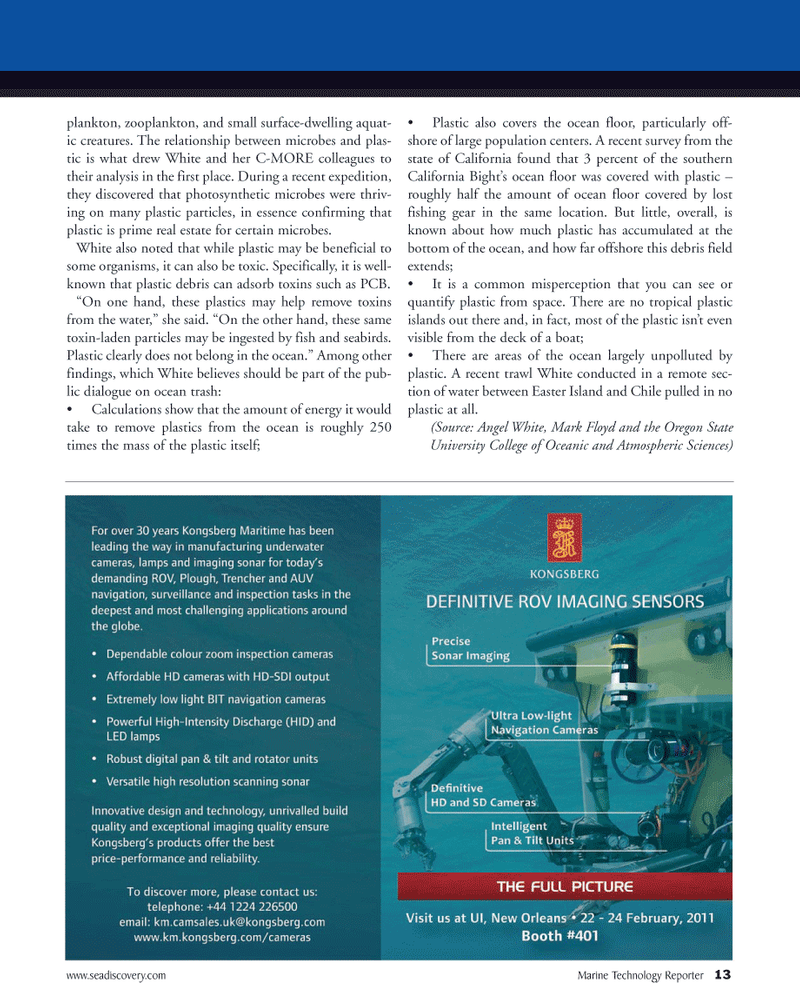
Page 13: of Marine Technology Magazine (January 2011)
Marine Salvage & Recovery
Read this page in Pdf, Flash or Html5 edition of January 2011 Marine Technology Magazine
www.seadiscovery.com Marine Technology Reporter 13 plankton, zooplankton, and small surface-dwelling aquat- ic creatures. The relationship between microbes and plas- tic is what drew White and her C-MORE colleagues to their analysis in the first place. During a recent expedition, they discovered that photosynthetic microbes were thriv- ing on many plastic particles, in essence confirming that plastic is prime real estate for certain microbes.
White also noted that while plastic may be beneficial to some organisms, it can also be toxic. Specifically, it is well- known that plastic debris can adsorb toxins such as PCB. “On one hand, these plastics may help remove toxins from the water,” she said. “On the other hand, these same toxin-laden particles may be ingested by fish and seabirds.
Plastic clearly does not belong in the ocean.” Among other findings, which White believes should be part of the pub- lic dialogue on ocean trash: • Calculations show that the amount of energy it would take to remove plastics from the ocean is roughly 250 times the mass of the plastic itself; • Plastic also covers the ocean floor, particularly off- shore of large population centers. A recent survey from the state of California found that 3 percent of the southern
California Bight’s ocean floor was covered with plastic – roughly half the amount of ocean floor covered by lost fishing gear in the same location. But little, overall, is known about how much plastic has accumulated at the bottom of the ocean, and how far offshore this debris field extends; • It is a common misperception that you can see or quantify plastic from space. There are no tropical plastic islands out there and, in fact, most of the plastic isn’t even visible from the deck of a boat; • There are areas of the ocean largely unpolluted by plastic. A recent trawl White conducted in a remote sec- tion of water between Easter Island and Chile pulled in no plastic at all. (Source: Angel White, Mark Floyd and the Oregon State
University College of Oceanic and Atmospheric Sciences)

 12
12

 14
14
